|
In the late afternoon of 10 June, we headed on to our next destination, arriving at the modern town of Luding at 7.30 pm. We set out at 5.00 am the next day for Erlangshan, a short distance away. However, it was a relatively slow journey as one side of the road was under repair and we were driving against convoys of lorries heading in the opposite direction to us. We turned off onto the old Erlangshan road at 6.40 am and began birding. We had a number of good birds along the road including Rufous-tailed Babbler, Spotted Nutcracker, Chinese Thrush, Sharpe’s Rosefinch, Firethroat, Chinese Cupwing and Chestnut-headed Tesia, as well as several calling Lady Amherst’s Pheasants . We heard Black-streaked Scimitar Babbler but could not entice it out into the open. Unfortunately, at one section before the top, the road became too rough for our two-wheel drive vehicle, so we had to walk up to an area of bamboo that can be productive for parrotbills. We saw two Black-faced Laughingthrushes, a pair of Golden Bush Robins and both Rosy and Olive-backed Pipits, but there was no sign of any parrotbills. We drove back down the mountain at 4.00 pm only to find a long tailback of lorries as the road was now closed until early evening. To pass the time, we drove a little way back up the mountain and managed to find a solitary Barred Laughingthrush, a species that – like the parrotbills – had eluded us earlier. The morning of the 12th was wet and cloudy, so we decided not to explore the other side of Erlangshan as we had planned but head straight to Longcanggou. We arrived there at 8.30 am and drove up a picturesque steep-sided valley different to the main area usually visited by birders. There were a number of new birds for the trip, including at least 11 White-throated Needletails, a Himalayan Swiftlet, three Black Bazas, a juvenile Crested Honey Buzzard, several Hair-crested Drongos, several Buffy Laughingthrushes, a White-backed Woodpecker, a Chinese Blue Flycatcher and singing Alstrom’s, Kloss’s and Emei Leaf Warblers. We checked into our hotel just outside the park. Four Ashy-throated Parrotbills were in the bushes near the buildings. Later in the afternoon, we went to the lower level of the main birding valley in search of Sichuan Bush Warbler. We heard it singing readily enough, but it took a while for us to get semi-decent views of the bird itself. Longcanggou is basically a wide forested valley between 1400 and 2400 metres in elevation. One side of the river is a scenic area open to the public; the other side is off-limits to the general public and the access gates are usually locked. Birding groups can make special arrangements to access this private area. The road, rough in places but passable, goes through dense mixed forest up into more open forest and to an area of bamboo forest (although there is bamboo all along the road). The upper area houses a Panda re-introduction scheme and is inaccessible to everyone. We spent 13th & 14th June walking up and down the road, largely between the upper and middle sections. Highlights were Golden Parrotbills on both days, and two Brown Parrotbills on 13th. Disappointingly, however, we heard Great Parrotbill on both days, but did not see it, and were unable to link up with Grey-hooded and Three-toed Parrotbills at all. We heard three Emei Shan Liocichlas on 12th but did not see any of them. Longcanggou is known for its rainfall. The 13th was clear but it rained all day on 14th and on the morning of the 15th. This was insufficient to curtail our birdwatching but it did mean that I didn’t use my camera on those days. On 14th, in the early morning, we explored a rough, dead-end track off to the left eight kilometres before the Panda base. This track (and the adjacent main access road) proved very good for Temminck’s Tragopans. We had a total of six males, four females and six chicks there. Nearer the summit, in the enveloping mist, we eventually had a decent view of an inquisitive Emei Shan Liocichla. The final rare endemic of the day was a Golden-fronted Fulvetta found by Summer in the public section of the scenic area in the late afternoon. On the morning of 15th, again in the rain, we walked the road down the valley we had visited on 12th. Additional species we found were ten Black-chinned Yuhinas and a Little Forktail. We then drove back to Chengdu airport so I could catch my afternoon flight back to Hong Kong.  With special thanks to Summer.
0 Comments
On the morning of 9 June, we drove east back towards Chengdu, but then diverged south towards the montane sites of Labahe, Erlangshan and Longcanggou. Labahe is a scenic area that has fairly recently re-opened to the public after being off-limits for several years. There is a fine four-star hotel beside a river and a road up the mountain accessible by park bus. After lunch, we took the bus to the top of the mountain, and then got the cable-car even higher – up to 3500 metres. Unfortunately, the peak was covered in a rain cloud; it was cold and wet and visibility was severely limited. At the upper station we found a female Golden Bush Robin and a singing Spotted Bush Warbler, but there was no sign of Summer's main target species, the Sichuan Treecreeper, a bird which was only described in 1995. The idea was mooted to walk down the steps that ran parallel to the cables, but I was not keen, so we caught the cable car back down to the lower station and walked down the road from there. The habitat here was mainly birch woodland with an understorey of bamboo. Aberrant Bush Warblers were common and there were a number of Phylloscs including Claudia’s, Large-billed Leaf, Sichuan Leaf, Ashy-throated and Bianchi’s Warblers. We had brief views of a Fulvous Parrotbill. Other birds of note were four Stripe-throated Yuhinas, several Fire-capped Tits and four Mrs Gould’s Sunbirds. In the evening, I went for a stroll along the river opposite the hotel and saw Brown Dipper along with White-capped and Plumbeous Water Redstarts. What I assumed to be a Sambar Deer grazed on hillside not far from the hotel, but I have since been informed by Jose R Castello that it was in fact a Sichuan Wapiti Cervus canadensis macneilli. On the morning of the 10th, we headed back up the mountain, taking a couple of trails off the main road in the upper-middle section of the mountain. In one area we heard a couple of singing Blue-fronted Robins but I only managed an inadequate glimpse of one of them. Temminck’s Tragopans were more obliging and we had excellent views of at least three of them. Back at the main road, we had good views of a male Lady Amherst’s Pheasant. Along another quiet trail, we found the endemic Pere David’s Tit, as well as a pair of Yellow-bellied Flowerpeckers. Flycatchers in the area consisted of Verditer, Dark-sided, Ferruginous and Slaty-backed. We hitched a lift up to the cable car station and decided to walk a little way up the steps parallel to the cables. Here, we had good views of a male Golden Bush Robin and c. 200 metres up the steps, Summer found a Sichuan Treecreeper which also provided excellent views as it foraged on tree trunks, presumably collecting food for its young. Walking back downhill, we turned up a Firethroat and four Fulvous Parrotbills. The morning of the 12th was wet and cloudy, so we decided not to explore the other side of Erlangshan as we had planned but head straight to Longcanggou. We arrived there at 8.30 am and drove up a picturesque steep-sided valley different to the main area usually visited by birders. There were a number of new birds for the trip, including at least 11 White-throated Needletails, a Himalayan Swiftlet, three Black Bazas, a juvenile Crested Honey Buzzard, several Hair-crested Drongos, several Buffy Laughingthrushes, a White-backed Woodpecker, a Chinese Blue Flycatcher and singing Alstrom’s, Kloss’s and Emei Leaf Warblers.
We checked into our hotel just outside the park. Four Ashy-throated Parrotbills were in the bushes near the buildings. Later in the afternoon, we went to the lower level of the main birding valley in search of Sichuan Bush Warbler. We heard it singing readily enough, but it took a while for us to get semi-decent views of the bird itself. Longcanggou is basically a wide forested valley between 1400 and 2400 metres in elevation. One side of the river is a scenic area open to the public; the other side is off-limits to the general public and the access gates are usually locked. Birding groups can make special arrangements to access this private area. The road, rough in places but passable, goes through dense mixed forest up into more open forest and to an area of bamboo forest (although there is bamboo all along the road). The upper area houses a Panda re-introduction scheme and is inaccessible to everyone. We spent 13th & 14th June walking up and down the road, largely between the upper and middle sections. Highlights were Golden Parrotbills on both days, and two Brown Parrotbills on 13th. Disappointingly, however, we heard Great Parrotbill on both days, but did not see it, and were unable to link up with Grey-hooded and Three-toed Parrotbills at all. We heard three Emei Shan Liocichlas on 12th but did not see any of them. Longcanggou is known for its rainfall. The 13th was clear but it rained all day on 14th and on the morning of the 15th. This was insufficient to curtail our birdwatching but it did mean that I didn’t use my camera on those days. On 14th, in the early morning, we explored a rough, dead-end track off to the left eight kilometres before the Panda base. This track (and the adjacent main access road) proved very good for Temminck’s Tragopans. We had a total of six males, four females and six chicks there. Nearer the summit, in the enveloping mist, we eventually had a decent view of an inquisitive Emei Shan Liocichla. The final rare endemic of the day was a Golden-fronted Fulvetta found by Summer in the public section of the scenic area in the late afternoon. On the morning of 15th, again in the rain, we walked the road down the valley we had visited on 12th. Additional species we found were ten Black-chinned Yuhinas and a Little Forktail. We then drove back to Chengdu airport so I could get my afternoon flight back to Hong Kong. Just after dawn on 5 June we were above the treeline at Mengbishan. Yaks were feeding on the scrubby slopes where newly-fallen snow covered the tops. Our immediate target bird was Verreaux’s Monal (aka Chestnut-throated Partridge), a large gamebird endemic to the mountains of central China. Birds were calling loudly on the slopes above us and in the forest below, but they refused to show themselves. We spent the day walking up and down the road in search of the partridges and also another endemic – the Sichuan Jay. The latter proved as elusive as the monal, although a small party of birders guided by Steven An that we bumped into (see http://www.chinabirdingtours.com ) managed to connect with a party of three of them but they had long-disappeared before we arrived at the spot. However, we did see two Streaked Rosefinches and a Three-banded Rosefinch, which are both localised species in Sichuan. Other birds included Blood Pheasant, several Giant Laughingthrushes, four White-winged Grosbeaks, two Crimson-browed Finches, Crested Tit Warbler and Buff-barred Warblers singing commonly. We were back at Mengbishan on the following morning en route to Wolong. We walked the road below the treeline and this time our luck was in. We had brief views of two White-eared Pheasants on a slope just above us and a pair of Verreaux’s Monals flew downhill across the road below us. Three Sichuan Jays flew between pine trees and lingered at a spot where Summer had seen them in the past. On our way to Wolong, we had a break at a scenic area known as Liang He Kou where we spent some time exploring the attractive deciduous forest along a fast-flowing river. Before it began to rain, we saw 50 Asian House Martins and two Salim Ali’s Swifts. There were a couple of singing Large-billed Leaf Warblers and Claudia’s Leaf Warblers, and Plumbeous Redstarts and White-capped Redstarts were active along the river. We reached Balangshan, a key mountain site, in the late afternoon and stopped to scan the hills surrounding the tunnel area for gamebirds. We saw a single White Eared Pheasant but had no joy with the Chinese Monal, our main target species. We then continued downhill to our hotel at Wolong (2,000 metres asl), which was to be our base for three nights. 7 June dawned bright and clear and we explored Balangshan in more depth including the tunnel area, the middle section above the tunnel and the area around Balangshan Pass which at nearly 4,500 metres is well above the treeline. On our first, foray, this higher area provided us with Tibetan Snowcock and Snow Partridge, a couple of Snow Pigeons, Alpine Choughs, Rosy Pipit, Plain Mountain Finch and Dark-breasted Rosefinch. Later in the day, we drove to the highest point of the pass where we added the stunning Grandala, several Alpine Accentors and Chinese Rubythroat to the list. In the late afternoon, we stopped at the old road next to the tunnel – an area popular with Chinese bird photographers keen to photograph the Chinese Monal. Summer spent some time taping out a Chestnut-crowned Warbler that she had heard in the vegetation; in the end, it gave us brief but excellent views. Other warblers singing at the old road were Alpine Leaf, Hume’s Leaf and Buff-barred Warblers. Finally, Summer scanned a distant slope through her scope and managed to pick out a solitary Chinese Monal foraging amongst the bushes. I had a twenty second view of the bird before clouds enveloped the hillside and the bird was consumed by the mist. On the next day, we headed back up to Balangshan but the weather had broken; rain and cloud made birding difficult. In the middle section above the tunnel, we heard Golden Pheasant and tracked down three singing Firethroats, one of which I managed to see well. Other birds included Lammergeir, Giant Laughing Thrush, White-collared Yuhina and four Bianchi's Warblers. A singing Sichuan Forest Thrush failed to show as did its close relative, the Alpine Thrush, which occurs at higher elevations. We heard the latter singing on the scree towards the pass, but it too remained invisible. The bad weather persuaded us to drive back to Wolong and explore that lower area. On the way we stopped at a place where the river became temporarily shallow (for the most part, Sichuan montane rivers are torrential and deep) and there were shingly islands in the water. Here we saw White-throated Dipper as well as the usual Plumbeous and White-capped Redstarts. Three Grey Wagtails were also present. Across the river, in the waterside bushes, Summer heard two Indian Blue Robins singing. This species is usually very difficult to see, but one of these singing birds provided good views as it occasionally perched out in the open. A Dark-sided Flycatcher was also present in the same area.
At Wolong village later in the afternoon, we explored an area of orchards. At this lower level, the avifauna again became a little more reminiscent of Hong Kong; species included Asian Koel, Red-billed Blue Magpie, Brown-flanked Bush Warbler, Daurian Redstart, Ferruginous Flycatcher and Common Rosefinch. We had at least four Chinese Babax in patches of bamboo. Other birds included 18 Speckled Wood Pigeons, singing Claudia’s and Martens’s Warblers, several Collared Finchbills and two Green-backed Tits. In the area near Lama Monastery, we found and had good views of two male Slaty Buntings, as well as a pair of colourful Mrs Gould’s Sunbirds. Several Chinese Leaf Warblers were singing. We heard, but did not see, Golden Pheasant, Barred Laughingthrush and Indian Blue Robin. At 2.00 pm on 3 June we were c. 20 kilometres away from Ruoergai when we came to a road block (the first of three such occasions when this happened during the trip). We were told the road ahead was being resurfaced and would not be opened until 7 pm. Fortunately, this was just after the turn off to Baxi Forest, one of the sites on our itinerary, so we headed down the rough track to the start of the forest. First, we explored two valleys with scrub-covered hillsides; Summer found two Spectacled Parrotbills at the first valley, along with Sichuan Tit and Himalayan Beautiful Rosefinch. The second valley offered up two more Sichuan Tits as well as a Snowy-cheeked Laughingthrush. After this, we followed a narrow trail into the pine forest proper; birds seen here included the beautiful Crested Tit Warbler and the endemic Przevalski’s Nuthatch, as well as Sichuan Leaf Warbler, Grey-hooded Fulvetta, Hodgson’s Treecreeper, Grey-crested Tit and Grey-headed Woodpecker. In the early evening we returned to the main road and joined the traffic queue until the road reopened. We then headed to Ruoergai. On 3 June, we left the hotel at dawn and drove c. 30 kilometres southwest of Ruoergai. Mist half-hid the rolling hills that rose up at the edges of the wide grassy plain. Since Chuanzhusi, there had been a very Tibetan feel to the landscape; many of the people in this part of Sichuan are, in fact, of Tibetan origin, and the houses and temples in many of the villages are distinctly Tibetan in character. Out on the plains, farmers eke out a living by herding yaks , as well as sheep and goats. Again, we walked scrub-covered hillsides in search of the rare, endemic Przevalski’s Finch. The first stop proved unproductive, but the second turned up an adult male and an immature male chasing each other in a territorial dispute for several minutes over the vegetation. We later found a third bird at another similar sight in the area. The hillsides turned up other birds of interest. We had seen several Himalayan Vultures on our journey on the previous day, and we had at least three more over the hillsides today, in addition to an immature Golden Eagle. Oriental Skylarks were singing commonly, as were at least four Common Cuckoos. Other birds of note were two Tibetan Partridges, a Little Owl, a Horned Lark, two Dusky Warblers on territory, several Ground Tits, two Robin Accentors, three Rock Sparrows, two White-browed Tits (another endemic), two Rosy Pipits and three Twites. In addition, we encountered a number of mammals: Siberian Roe, Red Fox, Plateau Pika, Himalayan Marmot and Woolly Hare. We drove back to Ruoergai and took the road east to Flower Lake. Several Upland Buzzards were perched on wires along the route and Black Kites were also much on evidence. There were also at least three pairs of Black-necked Cranes visible at some distance in the grasslands. Before the lake, we pulled off the main road and had a picnic lunch near a small disused quarry. The grassland here was alive with Plateau Pikas. There were also many White-rumped Snowfinches which use the pikas’ burrows to lay their eggs in; young birds were much in evidence. A few Rufous-necked Snowfinches were also in the area. Two Sakers flew overhead from the quarry and we discovered a nest containing two chicks in a crevice in the rock face. After lunch, we went to Flower Lake and walked along the boardwalk that has been constructed through the marshes. The lake is extensive and many birds were merely distant mirages in the afternoon heat haze. Greylag Geese and Ruddy Shelducks were common and there were four other species of ducks, including Ferruginous Duck and Red-crested Pochard. Two Brown-cheeked Rails called invisibly from the vegetation. Common Terns of the race tibetana were nesting. A few Brown-headed Gulls flew over the boardwalk and through a telescope we picked out a 2nd-calendar year Pallas’s Gull near to two Eurasian Spoonbills. Two Black-necked Cranes were also present. There were also at least four large Tibetan Larks near the start of the boardwalk. On the drive back to Ruoergai, we saw a couple more Sakers perched on wires, as well as a Lammergeier (Bearded Vulture) out on the meadows. On 4th June, we were back at Baxi Forest at dawn, but we drove much further than on 2nd. Our target higher up on the mountain side was Blue-eared Pheasant. In Sichuan this large colourful species is only found in the northern mountains and would not be present at any of the sites we would be visiting during the rest of the tour. After a long and bumpy drive, we stopped at a suitable site. Summer immediately saw a pheasant above us on the mountain side but it quickly disappeared into bushes. She set up her scope and focused on the spot but the bird remained invisible in the vegetation. After a while, I looked down the slope below us and saw a Blue-eared Pheasant briefly appear between bushes before it too disappeared. We walked along the road and Summer picked out the same bird with another making their way uphill between a row of trees. We had good views before they were lost to sight.
We drove back and had a brief walk into the forest where we had seen Przevalski’s Nuthatch on 2nd June. Here Summer saw a Chinese Grouse slink away from a thick clump of bushes but it eluded me. We also saw two Blood Pheasants and a Himalayan Bluetail, as well as hearing (and seeing) two Bianchi’s Warblers on territory, as well as having excellent views of a Tufted Deer. Back at the Baxi/Ruoergai road junction, three Cinereous Vultures flew overhead. We had a quick lunch back in Ruoergai before heading south towards Maerkang, 320 kilometres away, which was to be our base for two nights while we explored Mengbishan (4,000 metres asl). The six-hour journey became an eight-hour journey when we were stopped at Hong Yuan at 4.00 pm. The road was being resurfaced and would not open until 6.00 pm. So we sat in a queue of cars and lorries for two hours as a thunderstorm raged over the nearby hills and meadows. We didn’t arrive at Maerkang until gone 9.30 pm where we were so tired we went to bed without dinner. In the mountains, there you feel free. T.S.Eliot Chengdu, the main city in China’s Sichuan province, lies at 499 metres asl at the western end of what is known as the Sichuan Basin. North, west and south of the city, the level plain gives way to high mountain ranges dissected by steep-sided forested valleys with fast-flowing rivers, and around Ruoergai, more gentle pastured hills at the eastern end of the Tibetan plateau. This area supports an avifauna of rich diversity, including a significant number of endemic species. Of particular note are the variety of gamebirds, parrotbills and rosefinches, along with a bewildering array of Phylloscopus warblers. There is now a well-worn birding circuit taking in the mountains and the eastern edge of the Tibetan plateau. I spent the first two weeks of June traveling the circuit anti-clockwise, heading from Chengdu north to the Gongganling Pass, then heading basically south through the main sites of Ruoergai, Mengbishan, Balangshan, Labahe, Erlangshan and Longcanggou. I went with Summer Wong Bird Tours. Originally, I was meant to join three other birders on the trip but in the event, it ended up being just Summer, Uncle Xu the driver, and myself. Summer is in her early thirties, speaks excellent English, and is very knowledgeable; she knows where to find the birds and has an enviable ability to pick up the birds by sight and, more importantly perhaps, by sound. She also proved an excellent companion in the field. I flew out to Chengdu on the afternoon of 31 May and overnighted at the Chengdu Airport Hotel. Summer met me at the hotel at 6.30 am on the following day and we spent a couple of hours at what are known as the Lotus Ponds in the southeast of the city before driving 330 km north to overnight at Chuanzhusi (2980 metres asl), the base for exploring the Gonggangling Pass (3500 metres asl). The ponds, as with other areas at the base of the mountains we visited later in the tour, had an avifauna that would be familiar to any Hong Kong birder. Water birds included Yellow and Cinnamon Bitterns and nine Chinese Spot-billed Ducks, and among the passerine species were at least eight Chinese Grosbeaks and several Black-throated Bushtits. Three parrotbills seemed to be hybrid Vinous x Ashy-throated. We also heard a Chinese Bamboo Partridge but failed to see it. We left the ponds at 8.00 am and drove north out of the basin, slowly climbing along steep-sided river valleys with denuded hillsides for several hours to Chuanzhusi. After checking into our hotel we managed a little birding in the late afternoon. Summer drove a few kilometres towards Gonggangling and we stopped at a couple of hillside sights, birding the scrub below pine-covered slopes. Of note here were 80 Red-billed Choughs, as well as our first encounters with Chinese Fulvetta, Chinese White-browed and Pink-rumped Rosefinches, and Alpine and Hume’s Leaf Warblers. The next day we drove to the Gongglang pass, arriving just after dawn. The pastures here were rimed with frost; the puddles on the marshy grass were layered with ice. Our target species here was Pere David’s Owl; indeed, the rationale for doing the tour in an anti-clockwise direction was to try to find the owl before it became elusive in the post-breeding season. Unfortunately, it seemed to be already too late; the owl proved elusive both in the pine forest here and also in Baxi Forest near Ruoergai which was our next destination. However, there were compensations. We walked down a clearing in the forest and as the rising sun warmed the pines and the adjacent grassy hillside, birds became very active. Two Blood Pheasants ran quickly across the clearing at the bottom of the slope. Warblers consisted of Buff-barred, Alpine, Sichuan Leaf and Greenish, and we also had decent views of a singing Spotted Bush Warbler. A male Collared Grosbeak fed within a couple of metres of us. We also had two Sichuan Tits, three Himalayan Bluetails, two Slaty-backed Flycatchers and the only Maroon-backed Accentor of the trip. Later we walked up and down a hilly meadow at the edge of the forest. Birds of prey overhead included a Crested Honey Buzzard and two Himalayan Vultures. The scrub yielded up Kessler’s and Chestnut Thrushes, Elliot’s Laughingthrush, White-bellied and Blue-fronted Redstarts, Siberian Rubythroat and White-browed Tit Warbler. All in all, a good introduction to the Alpine avifauna of the province.
At 10.40 a.m., we began the drive to Ruoergai on the eastern edge of the Tibetan plateau. |




















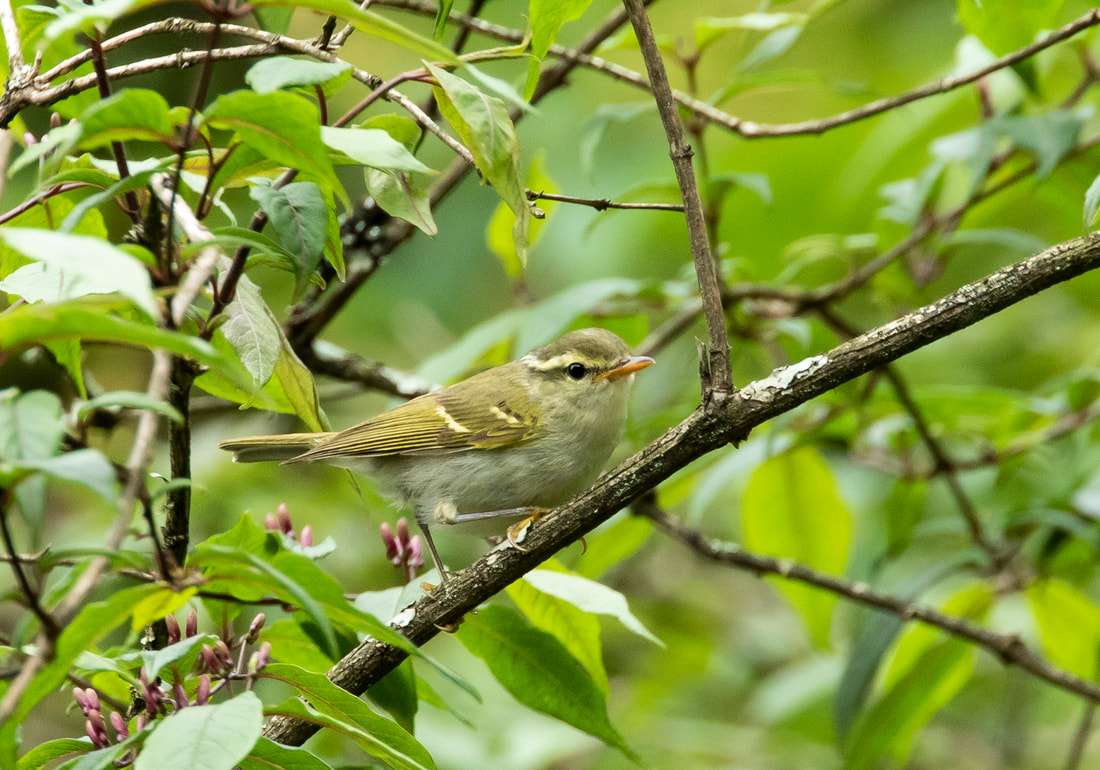
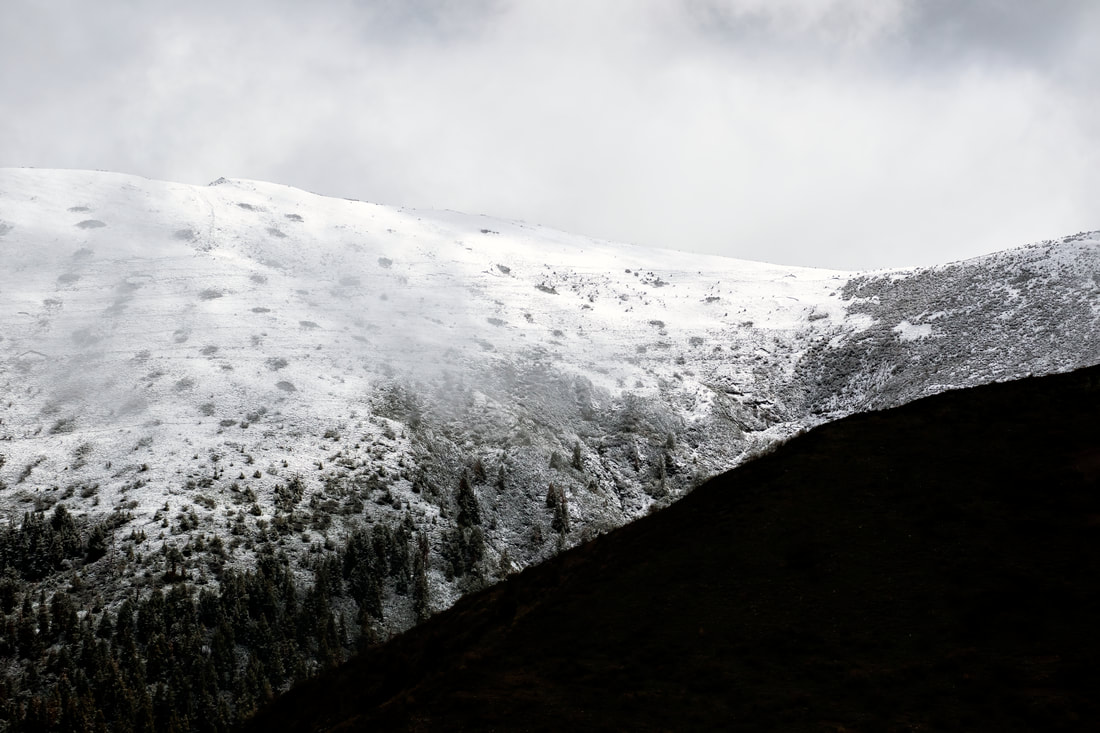


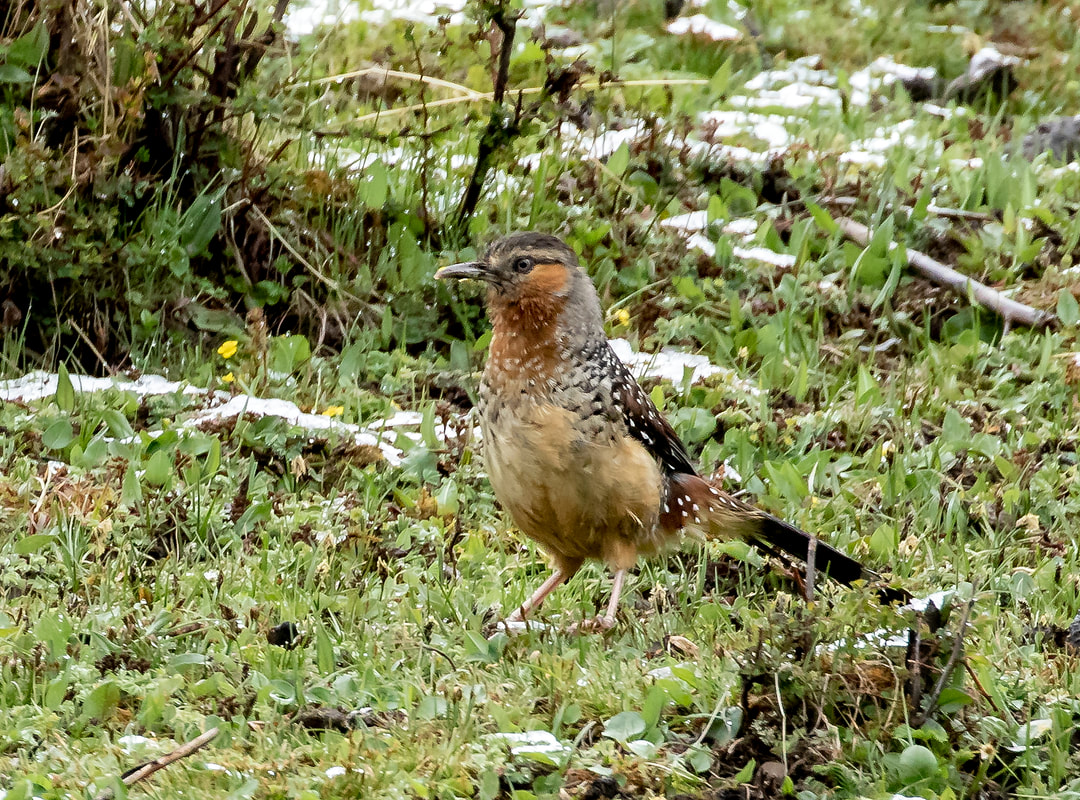
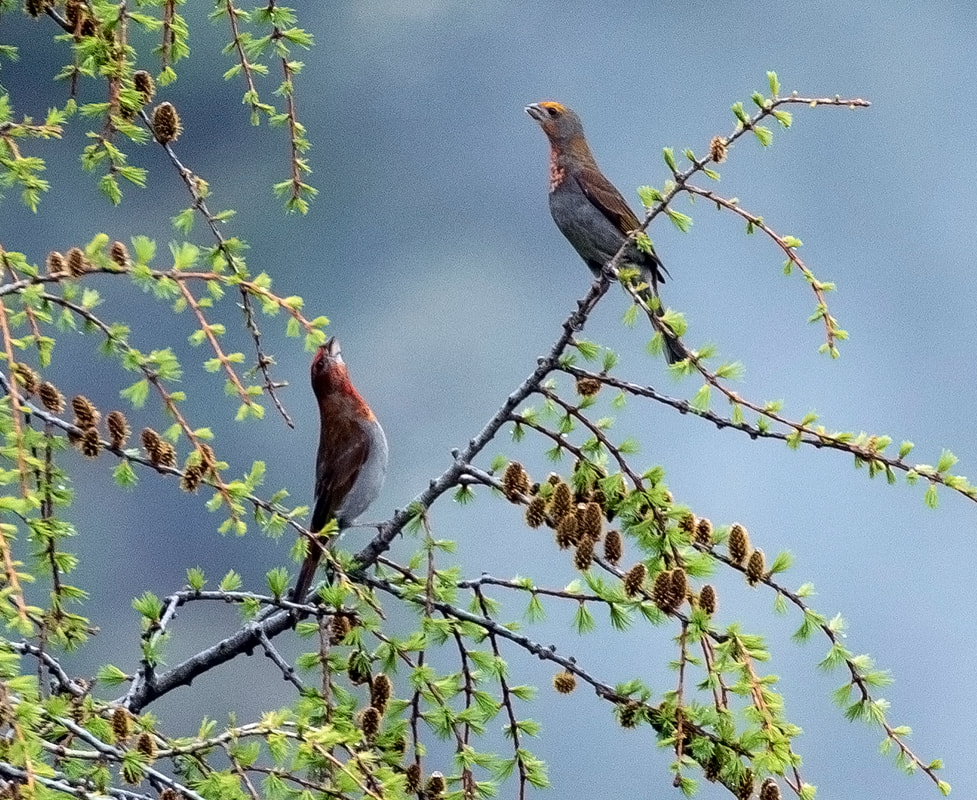




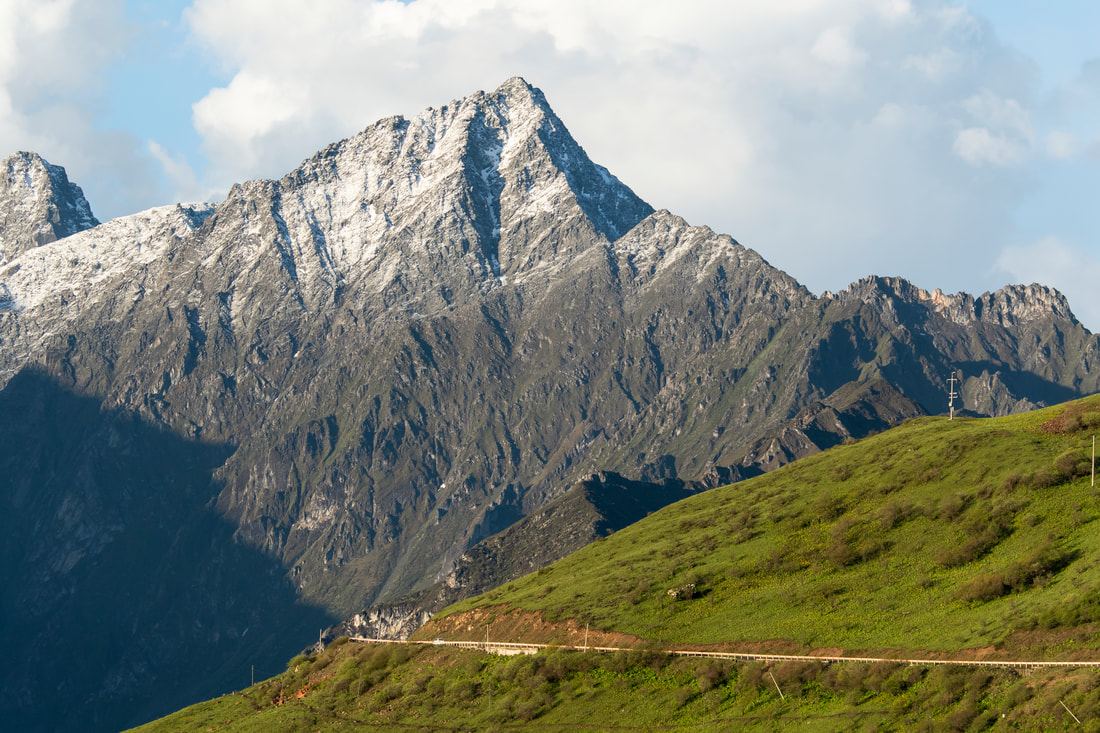
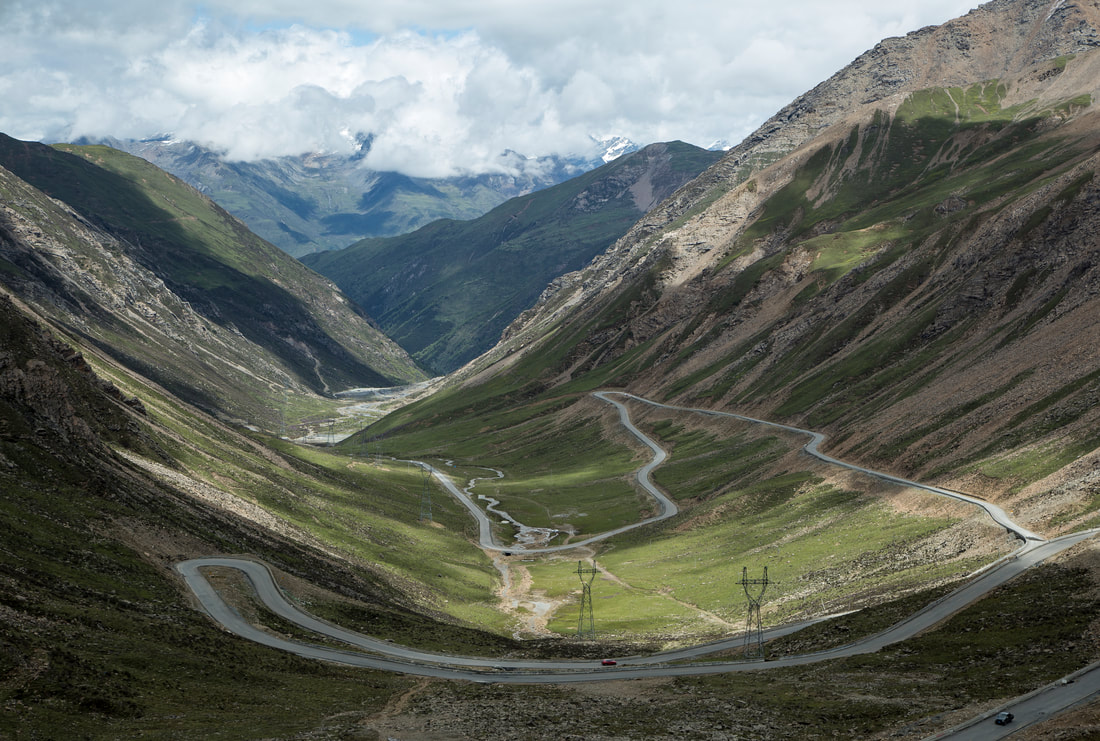










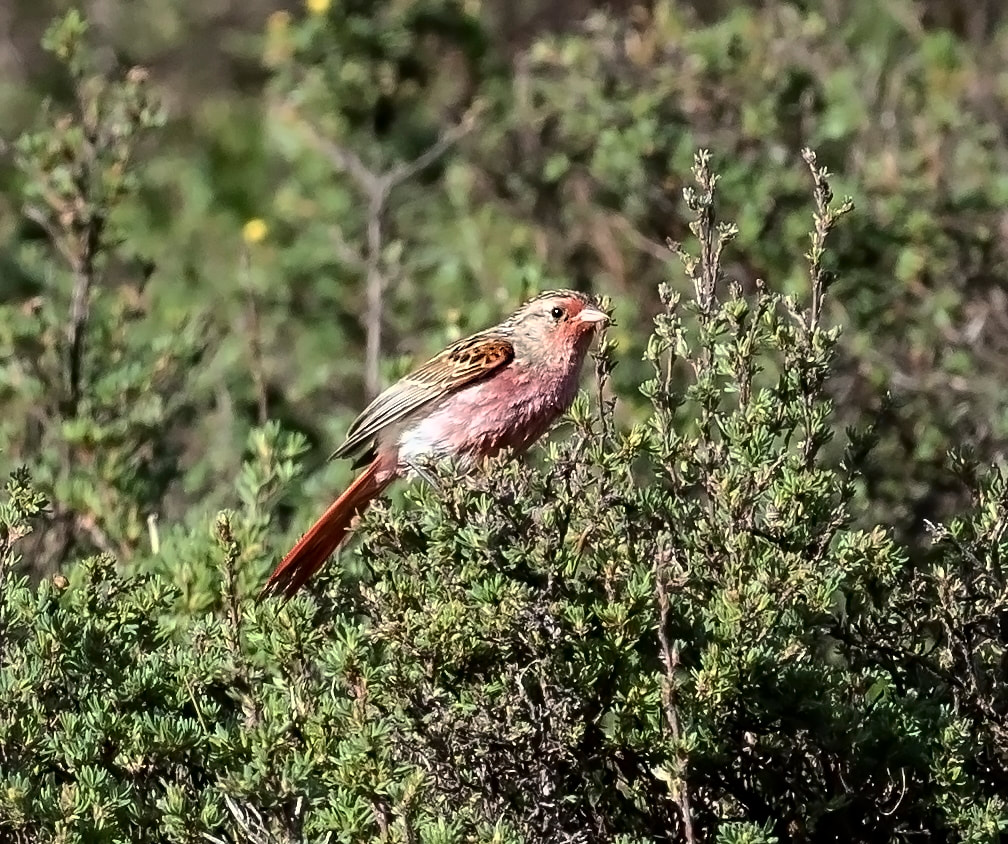







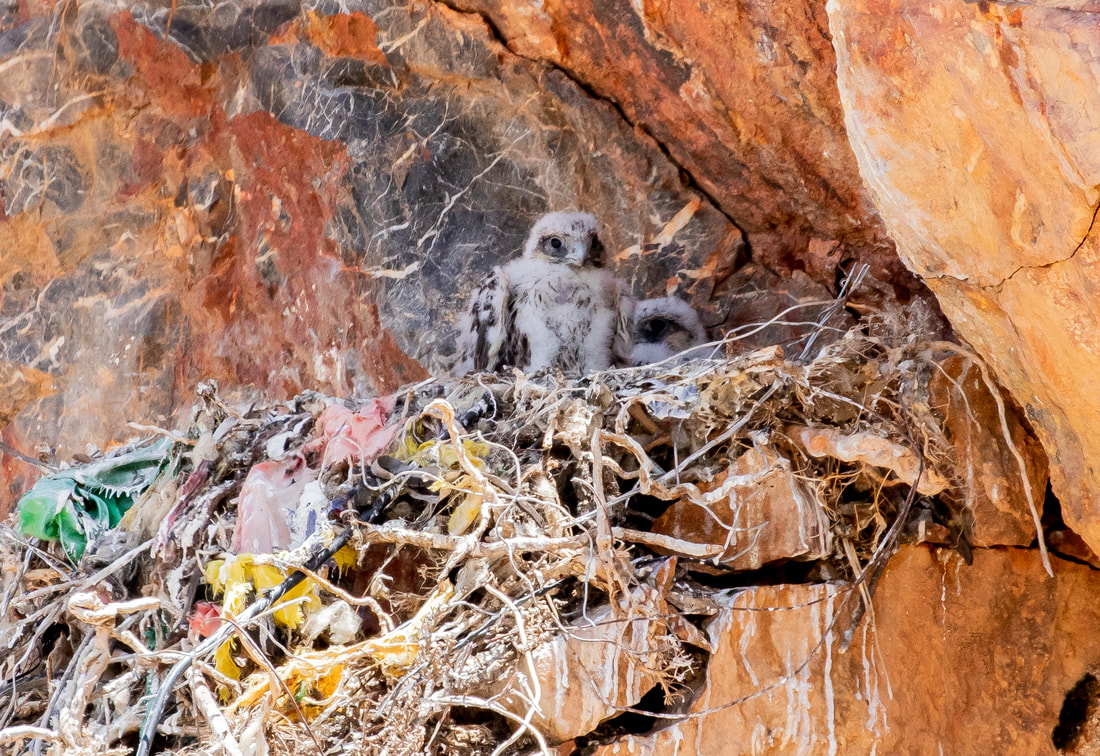


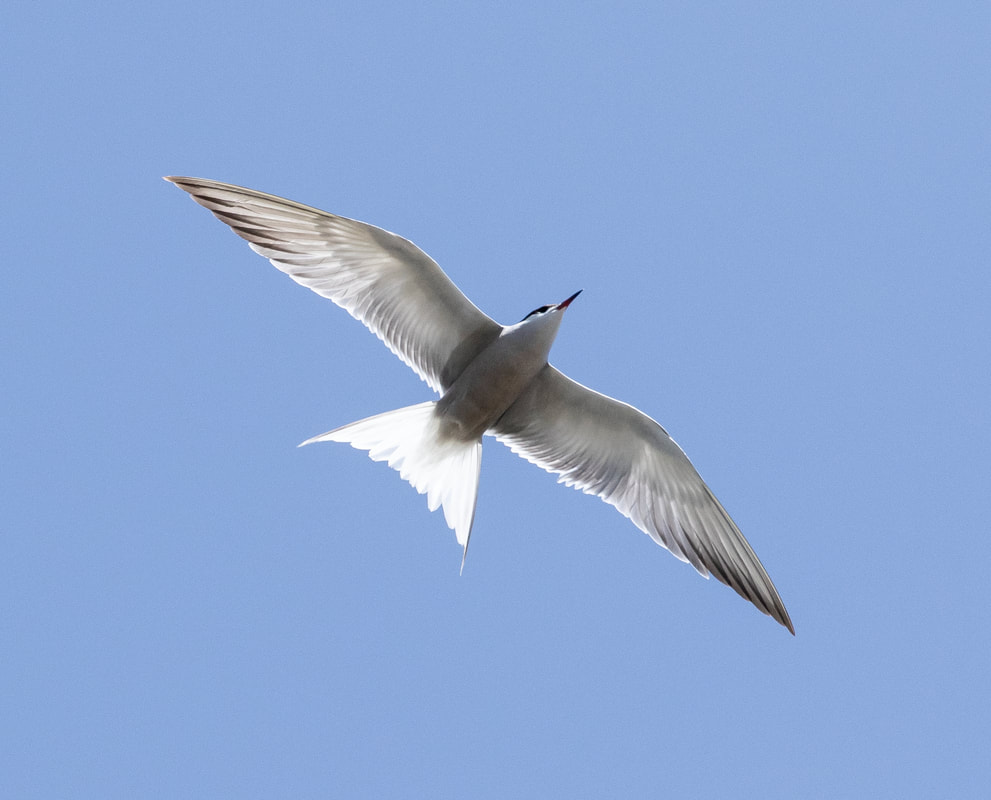












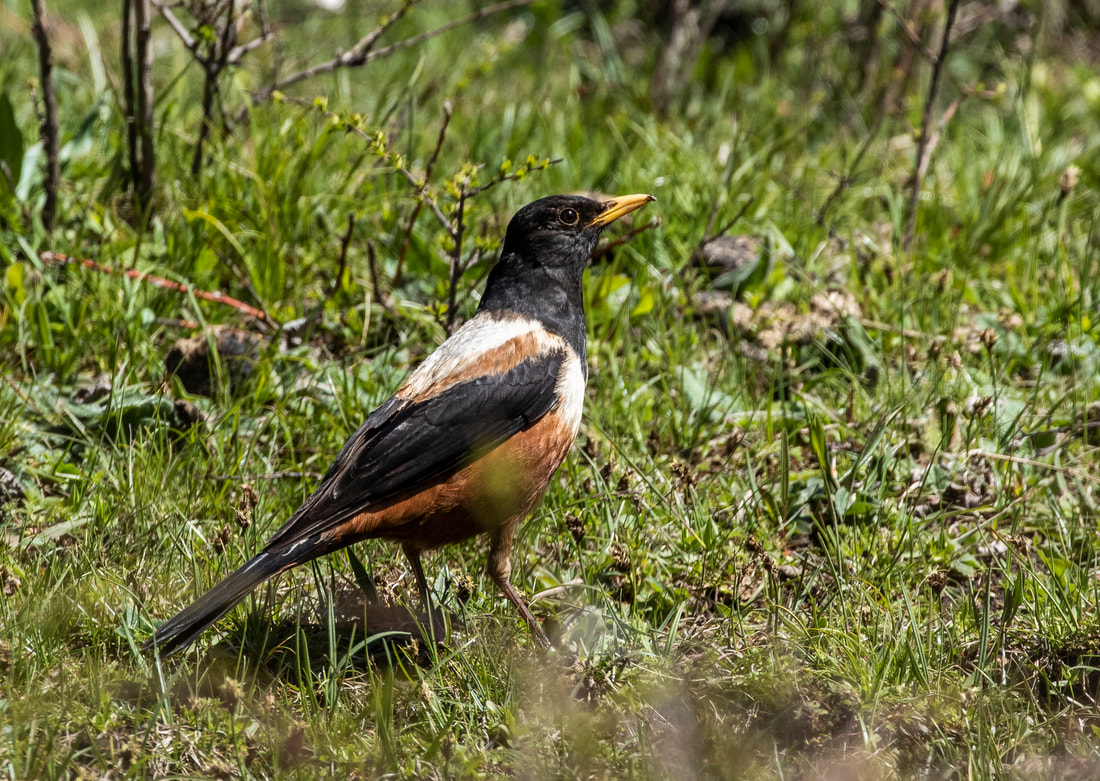


 RSS Feed
RSS Feed
